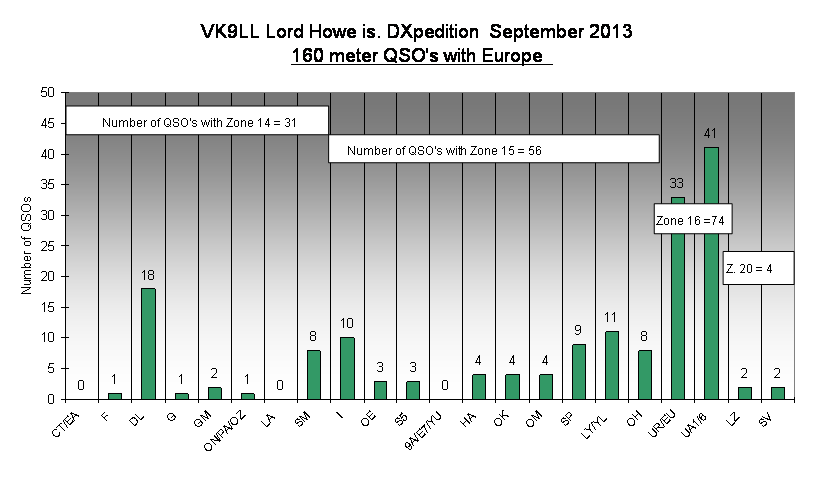VK9LL – Lord Howe is. by Tomas, VK2CCC – Sept. 2013 çbackà

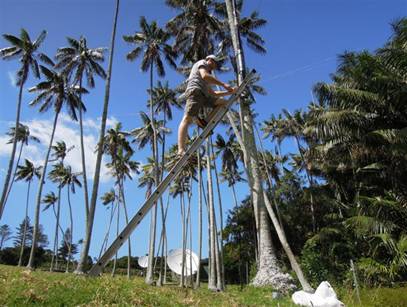
Lord Howe Is. is not an uninhabitable and unreachable reef, but is a beautiful holiday location with a regular airline connection, where a lot of DX operations took place during the years and is not on the most wanted DXCC lists. Anyway VK9L is highly needed on 160 meters in Europe because there had never been a big or low-band dedicated Dxpedition, like on all the other VK9 islands.
The Lord Howe Island Group is recorded by UNESCO as a World Heritage Site of global natural significance and thus has a range of problems - since this is some sort of nature reserve area - no camping / portable operation is allowed. Which means that there is no good operating position near the water, just in the town (RFI, no space for RX antennas etc.). The best tourist hotel is surrounded by mountains (800 m.) in the most desired northern directions.
Tomas, VK2CCC, loves 160 meters and made a lot of experience with low power DXpeditions in South Pacific islands, and already been in VK9L. We managed to work his 100 watts from Vanuatu as YJ0CCC in 2009. But 2009 has been a “magic year” on Topband…quite far from the 2013 propagation !
All the story, details and pictures can be found on the QRZ.com VK9LL page.
Tomas just wrote a great report “VK9LL story 2013” with a lot of technical informations, related links and nice pictures downloadable here. We knew his 160m. dedication and big effort, but we couldn’t know how much experience, preparation and technical skill is behind his DXpeditions. This document is a must to read for serious low-band DXing !
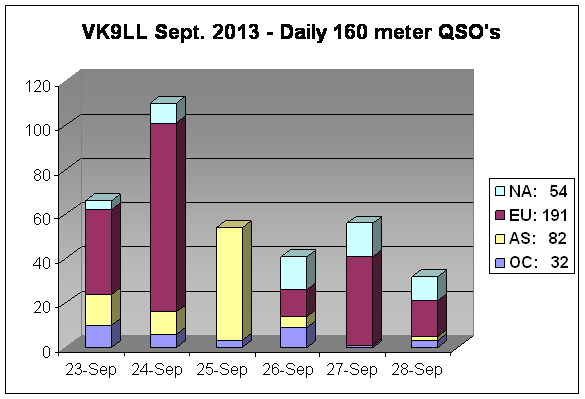
Tomas wrote me: “What I find difficult to understand is that W6 which I had open horizon to, only a few qsos have been logged.“, so I took into consideration all the QSO’s, not only Europe as usual, and the following is a worldwide DXAtlas map with marked the squares worked.
I also added the coloured stick pins with the following code for the number of stations worked in that square : azure = 5 or more; green = 10 or more; blue = 15 or more; red = 30 or more. Top crowded squares are PM (Japan) and KO (Eastern Europe) with both 50 followed by JN (Central Europe) with 32 stations: In North America the top square is EM (8 stations) followed by DM (7) DN and FN (both 5).
That’s difficult to explain: the path to NA is 11-14.000 km through an open horizon, while the path to EU is 16-17.000 km beyond the surrounding mountains!
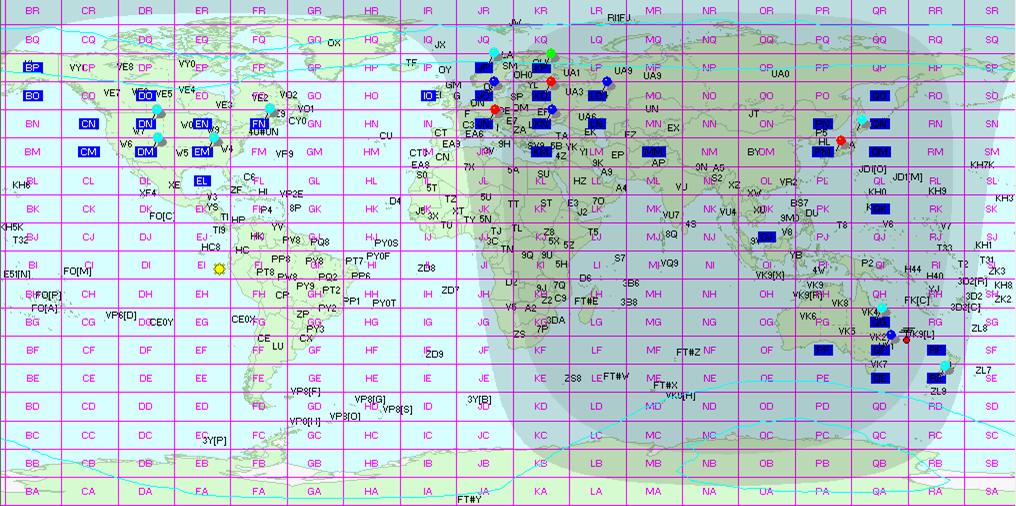
Going further in detail, this is the North America map with the single grid squares worked. Unlike for Europe, there is no grid square – even the most populated – which reached at least three stations worked, so no need to add coloured pins.
Out of the picture is Alaska, with two grid squares worked, and Eastern Canada with the furthest VY2ZM in FN86…well done Jeff!
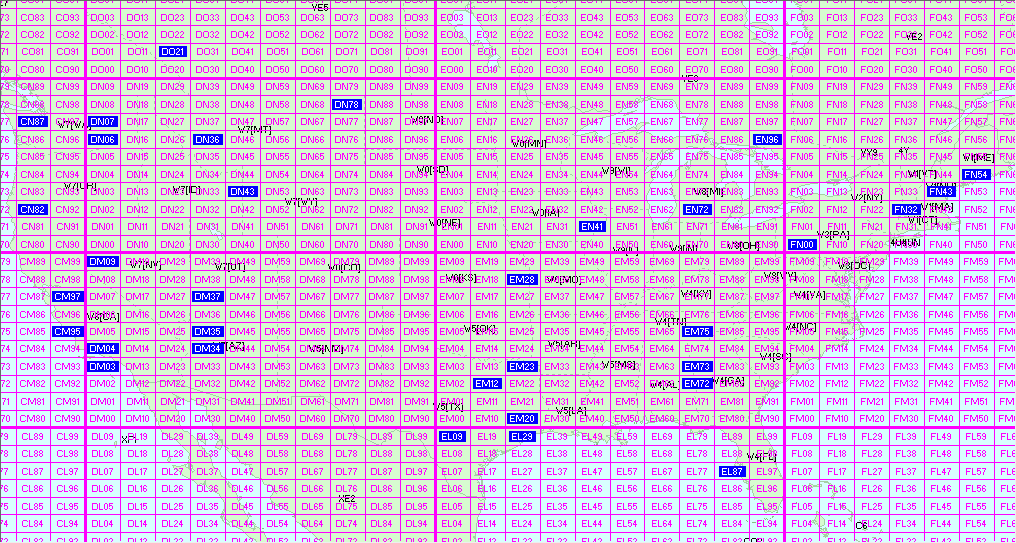
This is the familiar map for Europe where I added the coloured stick pins with the following code for the number of stations worked in that grid square : azure = 3 or more; green = 5 or more; blue = 7 or more; red = 10 or more. (I kept the same pin codes and scale to compare with the previous DXpeditions maps).
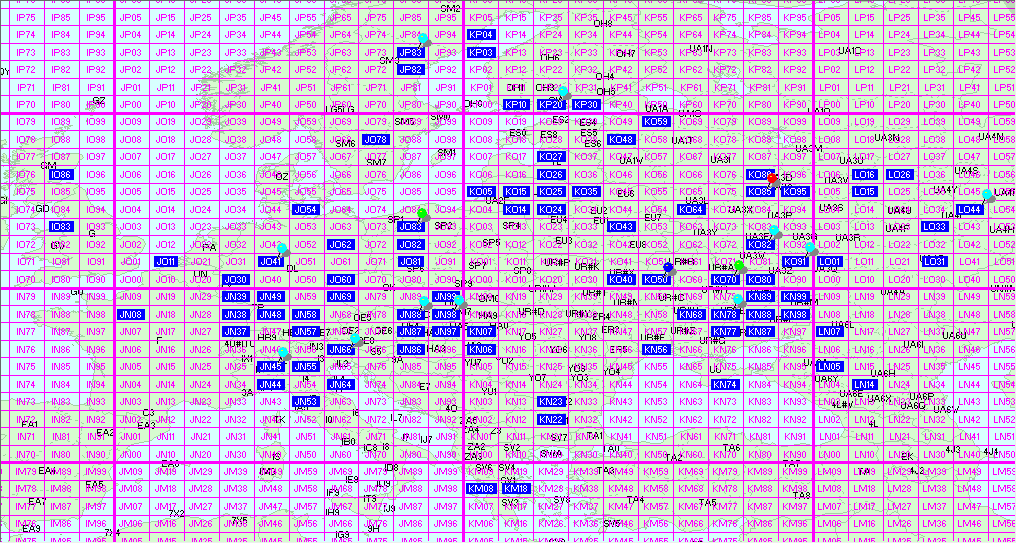
160 m. conditions with Europe have been better than expected, for this season, and we must be grateful to Tomas for his dedication and great effort. He has been calling CQ for long periods without any contact, but he never gave up, until his sunrise. I guess propagation has been mostly by “ducting mode” and you had just to be lucky waiting for your spotlight, i.e. an hole to let you enter in the duct. Some areas have been completely left out, in West and South Europe, and in the Balkans, where are the best equipped stations for 160m DXing, usually very successful with the Pacific.
There have been some rare exceptions, like a French station in JN08 worked as the first European on the first day, and nobody else but ON4WW in continental West Europe. Only three British stations wkd, and two of them were the last ones in different days. Down, on the other side, an SV1 station was worked three times in three different days!
In Italy the best equipped and operated station in I4 area never heard VK9LL, while he has been for long time heard and easily worked near Milan. But the most enlightening case of spotlight propagation concerned Poland with 9 (nine) SP3 stations worked… not a single SP2, SP4 or SP5…only SP3’s !
